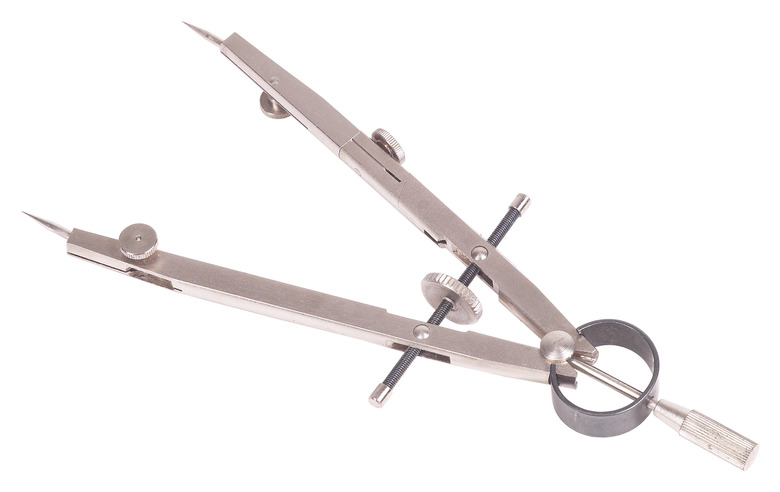How To Measure An Angle Using A Protractor
An angle is the meeting of two lines. Angles and lines form the bedrock of geometry. In the physical world, angles are everywhere. Walls and doors meet at an angle, roads curve and incline at angles, and sports involve pitching and shooting a ball at set angles. Knowing how to measure angles is an important skill.
Step 1
Review your knowledge of the protractor. The protractor is a semicircular instrument with degrees marked off along the circular edge. Generally, there are two sets of markings. Reading clockwise, the outer marking goes from 0° to 180°, and the inner markings go from 180° to 0°. The baseline, also known as the zero edge, has a small circle at its midpoint. This is the center mark, or origin point.
Step 2
Place the protractor on one arm of the angle, lining up the center mark with the vertex (the point at which the two lines meet).
Step 3
Ensure that the zero edge lines up with one arm of the angle and that the other arm crosses the protractor's scale.
Step 4
Remember that a right angle is 90° and looks like the capital letter "L." Determine if the angle you are measuring looks greater than 90° (obtuse angle) or less than 90° (acute angle).
Step 5
If it looks greater than 90°, then read along the outer scale. If it is less than 90°, then use the inner scale.
Things Needed
- Protractor
- Pencil
- Ruler
TL;DR (Too Long; Didn't Read)
Know that 0° and 180° may not be marked on the protractor. They are at the same level as the straight edge. Always use the correct scale. Check whether the numbers are increasing or decreasing. This will verify that you are using the correct scale. If the arms of the angle are too short, place the ruler along the arm and extend it so it crosses the semicircular outer edge of the protractor. This does not change the angle.
References
Cite This Article
MLA
Amit, Anjali. "How To Measure An Angle Using A Protractor" sciencing.com, https://www.sciencing.com/measure-angle-using-protractor-5872778/. 24 April 2017.
APA
Amit, Anjali. (2017, April 24). How To Measure An Angle Using A Protractor. sciencing.com. Retrieved from https://www.sciencing.com/measure-angle-using-protractor-5872778/
Chicago
Amit, Anjali. How To Measure An Angle Using A Protractor last modified March 24, 2022. https://www.sciencing.com/measure-angle-using-protractor-5872778/
